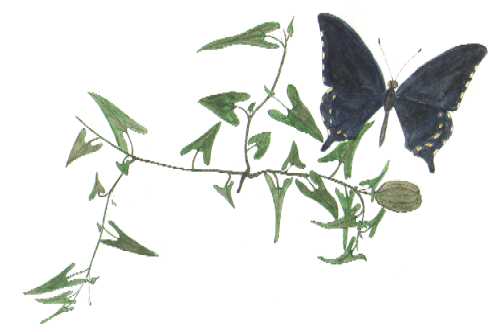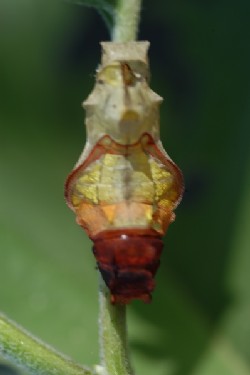Pipevine Swallowtail
Battus philenor

Watercolor painting by Mike Plagens. In the Sonoran Desert this butterfly is always associated with Indian Root; Pipevine (Aristolochia watsonii).

The mature larva molts to become a pupa (chrysalis). Within the
chrysalis the larva metamorphoses into the adult butterfly.
The commonly seen Pipevine Swallowtail reveals the nearby occurrence Aristolochia vine, a sometimes difficult to find plant. This is a conspicuous, iridescent, blue-black butterfly that avidly visits nectar sources (e.g. Seep Baccharis and Sweet Bush). The 4 cm-long, orange-red caterpillars are sometimes found wandering after they have eaten their original host down to the ground. Upon being disturbed the caterpillar extrudes a pair of foul smelling glands from behind the head. The odor is similar to that of the host plant, and in fact toxic chemicals derived from Aristolochia are stored within the caterpillar and the adult butterfly, probably protecting them from insectivorous birds. Both butterfly and plant are fairly common along riparian habitats or large desert canyons and washes.

This photo is from the website, Butterflies of Southeast Arizona!